Ground-Level Accessible Routes
A ground-level accessible route connects play components at ground level.
-
60 inches (1525 mm) minimum clear width
-
1:16 maximum slope
The route may narrow down to 36 inches (915 mm) for a distance of 60 inches (1525 mm). This permits flexibility to work around site design features like existing equipment or trees (below, top). The required 60-inch width enables two wheelchairs to pass each other or to change direction (below, bottom).
Smaller play areas - those that are less than 1,000 square feet (304.8 square meters) - may have ground-level accessible routes that are 44 inches (1120 mm) clear width. A wheelchair turning space must be provided where the route exceeds 30 feet (9.14 mm) in length.
At ground level, objects may not protrude into the 60-inch wide space of an accessible route up to or below the height of 80 inches (2030 mm), measured above the accessible route surface. The 80-inch clearance applies only to the 60-inch accessible route, and is not required for the entire play area. The 80-inch vertical clearance applies to ground-level routes only, and not elevated routes. This allows features like protective roofs and sun shelters to be present.
This play area provides a fun, accessible roadway theme. The protective shelters for the benches have been set outside the boundary of the route, providing the 80 inches of clearance required on the route.
Maximum Slope at Ground Level
The maximum allowable slope for a ground-level accessible route is 1:16.
Berms are sometimes used to provide access to elevated play areas. A berm may be a natural sloped surface that is present in a hilly play area site, or a ground-level route built with slopes.
Designers are encouraged to consider edge protection and handrails on berms where there may be a drop-off. Remember the maximum slope of this "ground-level accessible route" is 1:16.
However, handrails are not required on ground-level accessible routes. This is permitted since the handrails may become a safety hazard in the "use zone."
Accessible Ground Surfaces
Ground surfaces along accessible routes, clear floor or ground spaces, and maneuvering spaces, must comply with the American Society for Testing and Materials (ASTM) F 1951-99 Standard Specification for Determination of Accessibility to Surface Systems Under and Around Playground Equipment. This standard assesses the accessibility of a surface by measuring the work an individual must exert to propel a wheelchair across the surface. The standard includes tests of effort for both straight-ahead and turning movements, using a force wheel on a rehabilitation wheelchair as the measuring device. To meet the standard, the force required must be less than that which is required to propel the wheelchair up a ramp with a slope of 1:14.
When selecting ground surfaces, operators should request information about compliance with the ASTM F 1951-99 standard.
Accessible surfaces can include impact-attenuating tiles made of recycled rubber and engineered wood fiber that meet the ASTM requirements for accessibility and safety. Safety is not compromised for individuals using the play area where both standards are used.
The American Society for Testing and Materials (ASTM) has established safety standards for play areas, including resilient surfaces. For further information or to purchase these standards, contact ASTM, 100 Barr Harbor Drive, West Conshohocken, PA 19428-2959, www.astm.org.
Accessible Surfaces Located In The Use Zone
If located within the use zone, accessible ground surfaces must also be impact attenuating and meet ASTM F 1292-04 Standard Specification for Impact Attenuation of Surface Systems Under and Around Playground Equipment. The "use zone" is a ground level area beneath and immediately adjacent to a play structure or piece of equipment that is designated for unrestricted circulation around the equipment. It is predicted that a user would fall and land or exit the equipment on the surface of the use zone.
Accessible and non-accessible surfaces can be combined to provide variety and excitement in the play area.
Ground surfaces must be inspected and maintained regularly and frequently to ensure continued compliance with the ASTM F 1951-99 standard. The frequency of maintenance and inspection of resilient surfacing depends on the amount of use and the type of surfacing installed.
Engineered wood fiber surfaces will require frequent maintenance to comply with the ASTM F 1951-99 standard because of surface displacement due to user activity or other factors. Designers and operators are likely to choose materials that best serve the needs of each play area. The type of material selected will affect the frequency and cost of maintenance.
At the time of this publication, rubber surfacing and some engineered wood fiber products meet the ASTM F 1951-99 standard. The fact that a specific product meets the ASTM 1951-99 standard does not necessarily mean that all other similar products will meet the standard. Operators interested in selecting surfaces to comply with the play area guidelines should consult individual product manufacturers to determine compliance with ASTM F 1951-99.

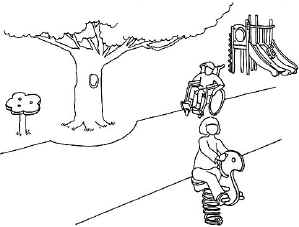
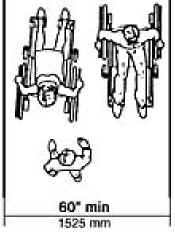
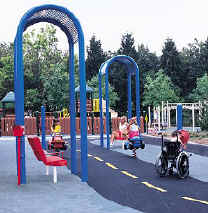
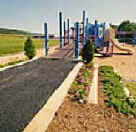
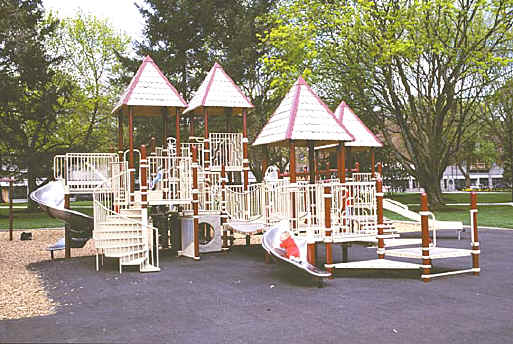
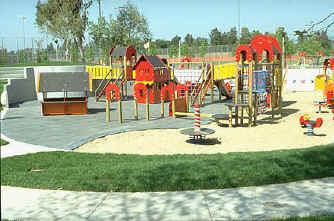
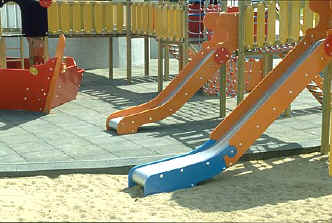
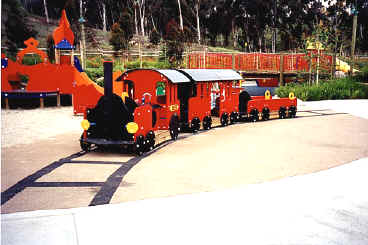
User Comments/Questions
Add Comment/Question